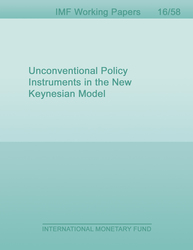
Unconventional Policy Instruments in the New Keynesian Model
This paper analyzes the use of unconventional policy instruments in New Keynesian setups in which the 'divine coincidence' breaks down. The paper discusses the role of a second instrument and its coordination with conventional interest rate policy, and presents theoretical results on equilibrium determinacy, the inflation bias, the stabilization bias, and the optimal central banker's preferences when both instruments are available. We show that the use of an unconventional instrument can help reduce the zone of equilibrium indeterminacy and the volatility of the economy. However, in some circumstances, committing not to use the second instrument may be welfare improving (a result akin to Rogoff (1985a) example of counterproductive coordination). We further show that the optimal central banker should be both aggressive against inflation, and interventionist in using the unconventional policy instrument. As long as price setting depends on expectations about the future, there are gains from establishing credibility by using any instrument that affects these expectations.
Publication date: March 2016
ISBN: 9781513573038
$18.00
Add to Cart by clicking price of the language and format you'd like to purchase
Available Languages and Formats
| English |
Prices in red indicate formats that are not yet available but are forthcoming.
Topics covered in this book
This title contains information about the following subjects.
Click on a subject if you would like to see other titles with the same subjects.
Economics- Macroeconomics , Economics / General , International - Economics , Unconventional monetary policy , equilibrium indeterminacy , stabilization bias , inflationary bias
Summary
Copyright © 2010 - 2024
Powered by:
AIDC



